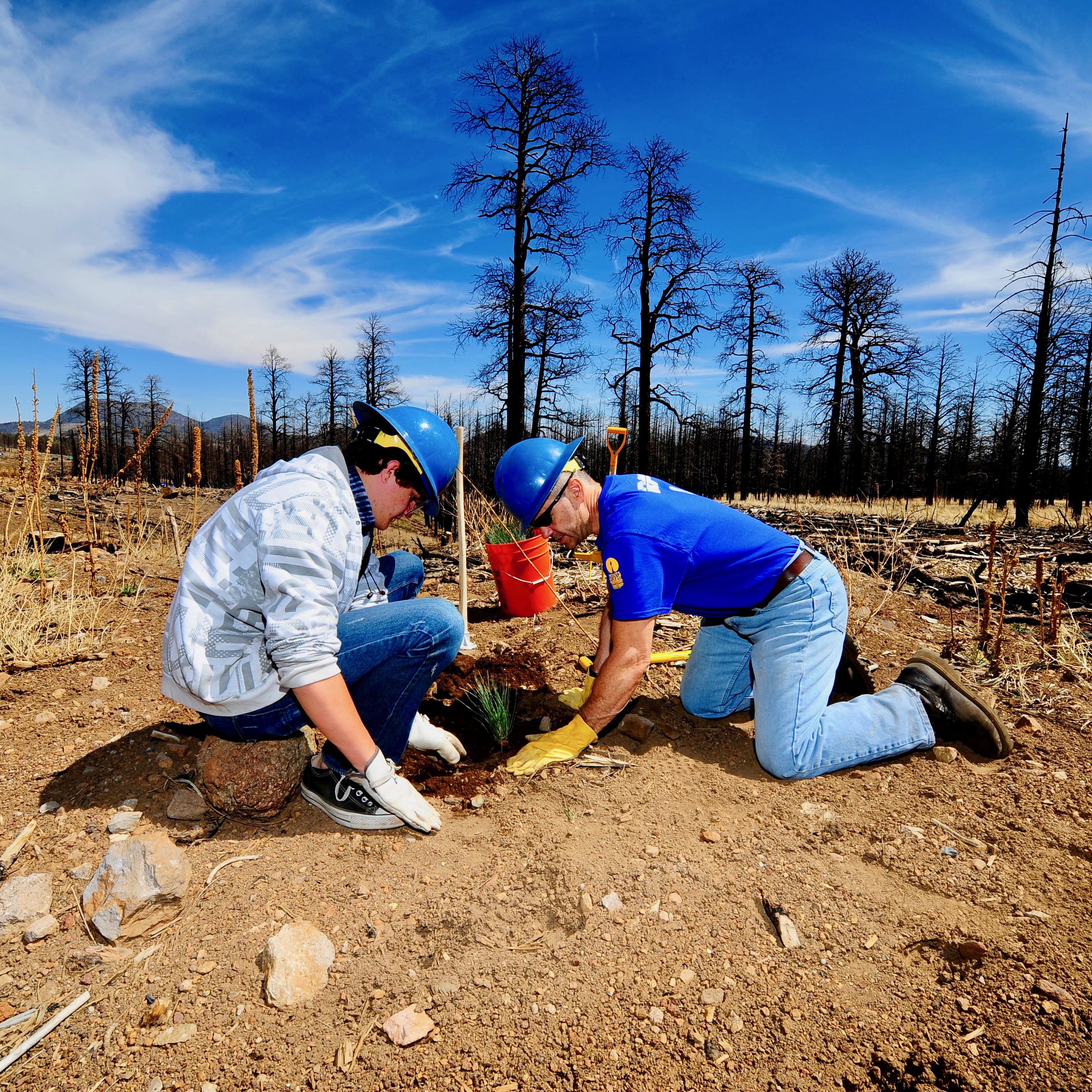Healthy Arizona Forests Are Vital To Valley Water Supplies

By Warren Tenney
If you live in the Phoenix Metro Area, more than half your drinking water likely comes from the Salt and Verde rivers. Springs, streams and wetlands in a 13,000-square-mile watershed feed these mountain rivers. In recent decades the watershed, which includes five National Forests, has been battered by extraordinary wildfires.
These wildfires burn at extremely high temperatures that wipe out all forest vegetation. They leave behind large amounts of ash, heavy metals, organic materials, and sediments that flow into the Salt and Verde rivers and accumulate in reservoirs. As a result, reservoirs hold less water and water from the rivers is harder and more expensive for cities to treat for drinking.
The devastation created by these wildfires motivated individuals, communities, businesses and others to work harder to safeguard our watershed. The Nature Conservancy created the Salt and Verde Rivers Water Fund to keep more water in those rivers and ensure the quality and quantity of Phoenix Metro’s water supply. The Salt and Verde Rivers Water Fund invests in projects to protect these rivers for the Phoenix area cities and for communities in the Verde Valley.
The Salt River Project (SRP) has long recognized the critical connection between the watershed and this Valley’s water supply. For over a century, SRP has managed and transported Salt and Verde river water to the Valley. In 2014, SRP approached the AMWUA cities about investing in a program to improve the wellbeing of this crucial watershed. The AMWUA member cities of Phoenix, Mesa, Glendale, Scottsdale and Peoria responded and helped to create the Northern Arizona Forest Fund. The cities were joined by a wide array of contributors, including Intel, Pink Jeep Tours, REI and the Nina Mason Pulliam Trust.
The National Forest Foundation, the nonprofit arm of the U.S. Forest Service, operates the Northern Arizona Forest Fund. Last year, more than $1 million was invested to complete watershed projects in Apache-Sitgreaves, Coconino, Kaibab, Prescott and Tonto National Forests. Here’s a brief summary of the Northern Arizona Forest Fund accomplishments in the past three years.
- Forest Restoration: 10,000 acres of projects to reduce wildfire fuels in Coconino, Kaibab and Prescott National Forests. Northern Arizona’s ponderosa pine forests have up to 1,000 trees or more per acre. The underbrush includes young trees in a thick layer of pine needles. Firefighters call this underbrush “ladder fuel” because it carries fire up to the crowns of the largest pines where flames grow hotter, move faster and are more destructive. These hot crown fires leave behind devastated landscapes covered with a thick layer of sterile soil that cannot absorb water and washes into streams, creeks, rivers and reservoirs. Research shows that returning these forests to about 100 to 150 trees per acre – a more historic number - significantly reduces the likelihood of crown fires. Thinner stands allow more trees to grow larger and tough enough to survive low intensity wildfires that burn underbrush and grasses closer to the ground.
- Trail and Road Restoration: 90 miles of work to control erosion and improve drainage on trails and roads in Coconino and Tonto National Forests. Every time a truck, an ATV or a motorbike travels along a dirt road in Arizona’s high country it churns up the ground, creates ruts and gullies, and degrades the edges of the road. When there is a storm, these dirt roads become conduits for runoff that carry the churned earth into streams and rivers. The runoff control projects redesign the roads to help catch sediment before it reaches nearby streams and rivers. The projects also repair the roads and trails providing easier access to public lands.
- Stream and Wetland Protection: 2,500 acres of strategically located meadows, wetlands and grasslands restored in the Apache-Sitgreaves and Prescott National Forests. Riparian areas and meadows have unique vegetation that protects streams by soaking up and storing water and releasing it steadily over time. This helps prevent flooding and erosion when snow begins to melt in the spring and during heavy rains. The work includes enclosing wetlands to reduce trampling and grazing and removing invasive plant species.
This year, the Northern Arizona Forest Fund is thinning 350 acres of forest and restoring and re-vegetating nearly 2 miles of stream bank with 4,000 native plants and trees. If you enjoy the outdoors and all this progress sounds exciting to you, the Northern Arizona Forest Fund is always looking for volunteers. Whenever you visit Arizona’s forests, please be cautious. We are experiencing extreme drought and even a small spark can ignite a disaster.
Photo: Salt River Project/Schultz Fire restoration
For 49 years, Arizona Municipal Water Users Association has worked to protect our member cities’ ability to provide assured, safe and sustainable water supplies to their communities. For more water information visit www.amwua.org.
To stay informed, sign up for the AMWUA blog